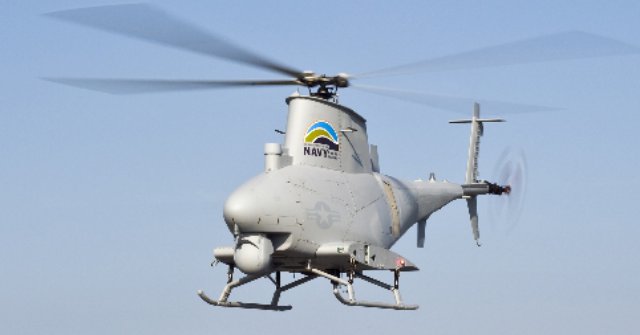 Contrary to recent reports, the Navy’s unmanned helicopter fleet is not permanently grounded following two unrelated crashes in a week, a service leader said on April 17.
Contrary to recent reports, the Navy’s unmanned helicopter fleet is not permanently grounded following two unrelated crashes in a week, a service leader said on April 17.
Routine flights of the MQ-8B Fire Scout, of which the Navy has 14, are merely suspended while investigations into the crashes are completed, said Capt. Patrick Smith, programme manager for multi-mission tactical unmanned aircraft systems.
Commanders are still authorized to fly the rotary wing unmanned aircraft if there is “operational necessity,” Smith told defense reporters at the Navy League’s annual symposium.
“They are not grounded,” Smith said. “When we lost the second aircraft, there was a recommendation to suspend flight operations unless there is operational necessity. We’re still going through an investigation to see what happened.”
On April 6, a FireScout operating in northern Afghanistan crashed during a surveillance mission with Regional Command-North, according to a statement from the Navy. The UAV was not recovered. The Navy has three of the aircraft in Afghanistan.
A week earlier, a Fire Scout was ditched at sea off the coast of Western Africa. It left the USS Simpson for an Africa Partnership Station surveillance mission, according to the statement. As it returned to the ship, its Common Automated Recovery System, a program that automatically lands it on the ship’s deck, failed.
Prior to the crashes, the aircraft had racked up 5,000 flight hours, Smith said. Three Fire Scouts deployed to northern Afghanistan flew around 3,000 of those hours in the past 14 months, an achievement that Smith called the aircraft’s “biggest success story.”
It was one of those helicopters that crashed in April. Smith said preliminary probes indicate the causes of the two incidents were unrelated, Smith said.
In the USS Simpson crash, “that aircraft was healthy and coming back on board and there was a conscious decision to terminate theflight,” he said. Smith did not know the extent of the damage to the UAV, but said exposure to salt water could be a concern. The crash and subsequent suspension of flight operations left the Simpson without an aerial capability.
Smith would not comment on possible causes of the April crash, saying he was unauthorized to speculate on what happened.
Smith wouldn’t say when the aircraft would be cleared to fly again, but future deployments already planned are moving ahead on schedule, he said. The frigate USS Klakring is preparing to deploy this summer in support of operations off the Horn of Africa with four Fire Scouts aboard.
Navy leaders are also pushing forward with plans to equip all of its littoral combat ships with unmanned helicopters, primarily the Fire Scout. Smith also voiced confidence the MQ-8 program would continue development on schedule.
The next iteration of unmanned helicopters, the MQ-8C, is undergoing testing and is scheduled to fly around October 2013. Its first deployment is scheduled for summer 2014.
That aircraft takes the systems package from the current platform and places it in a Bell 407 airframe. The two platforms are designed to be at least 90-percent compatible to reduce cost of conversion. The full-size helicopter will be completely unmanned, though test versions will likely be optionally piloted, he said.
Special operations forces deployed in Africa are the expected users of the MQ-8C. The Navy plans to purchase 28 of the larger aircraft, which also will offer increased lift and payload, Smith said.
The Obama administration’s fiscal year 2013 budget canceled the medium range maritime unmanned vehicle. The MRM program was supposed to result in the next-generation of UAV to follow the Fire Scout.
Source: National Defense
